As summer approaches, many people take great care of their food to prevent summer fatigue. Eel is perfect for such people. It is a good food for digestion because it is high in protein and rich in minerals and vitamins. In Japan, there has long been a custom of eating eel to prevent summer fatigue. Speaking of the typical eel dishes, there are “unaju” and “unadon”. Can you explain the difference between the two dishe. In this article, we will introduce about “unaju” as well as explain the difference between “unaju” and “unadon”.
What is Unajyu?
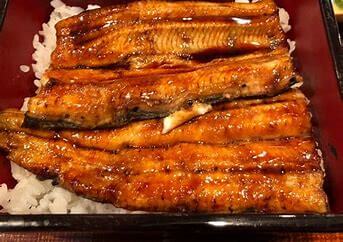
Unajyu, primarily made of eel, is a popular dish in Shizuoka Prefecture. Lake Hamana, located in the prefecture, holds the title as the birthplace of eel aquaculture. It was the first lake in Japan to succeed in cultivating eels. Several long-established eel specialty restaurants, in business for more than 100 years, call Hamamatsu city home. You can enjoy Unajyu in both the Kansai style, which features a sweet, crisp sauce, or the equally popular Kanto style. It’s best to buy and bake the Kanto style on the same day to prevent the tasty eel from becoming too chewy.
What is the Difference between Unajyu and Unadon?
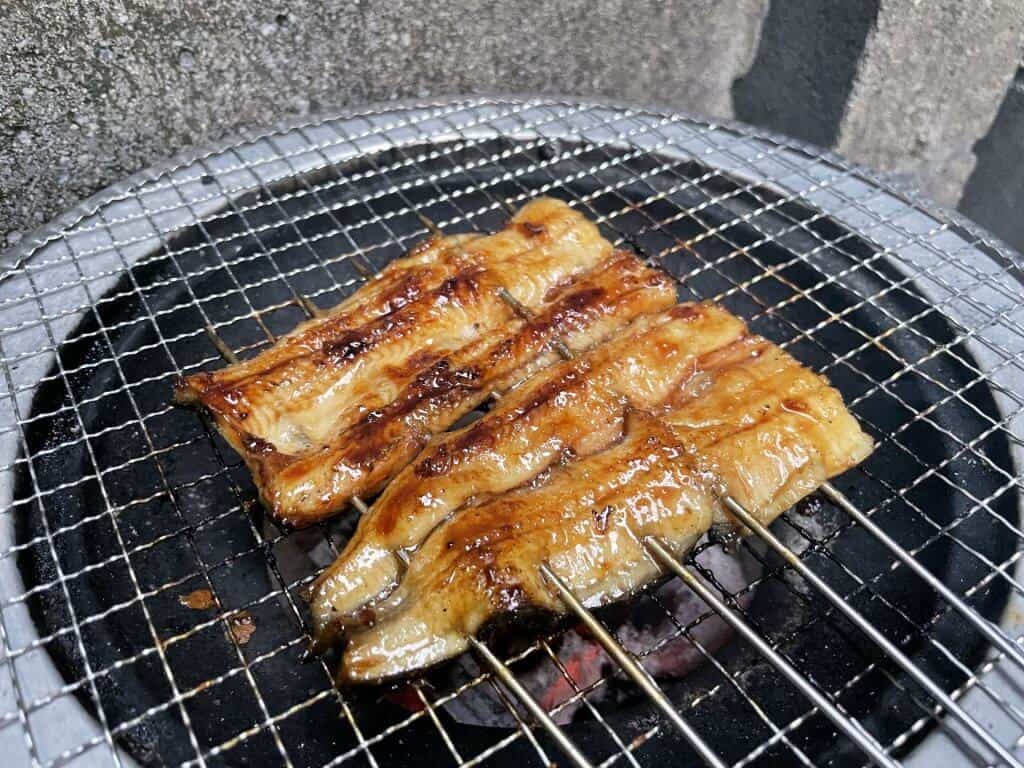
There is very little difference between the two. Unadon is served in a bowl and Unajyu is served in a heavy box. The difference between the bowl and the box is only seen in the quantity of eel present. On average, you can expect to receive 1.5 times more eel in a serving of Unajyu, than in a serving of Unadon. There is no difference in the quality of each. Both are available as a normal-sized or special sized portion. Unadon came into existence in the late Edo period of Japan, while Unajyu didn’t appear until the Meiji period. They introduced the use of the heavy box to deliver the meal to customers while keeping it warm. If you put the same amount of eel into the box, it appears a little scarce, so they introduced a larger sized meal for the box version.
Eel History
Eels have a long history in Japan’s cuisine. Excavations of shell mounds dating to the Jomon period (10,000-300BC) have uncovered eel bones over 5,000 years old. A famous song in Japan sees Otomo Iechimo encouraging Yoshida Renro to eat an eel, indicating that eels were known for their strong taste and nourishing properties. During the Heian period, aristocrats had a preference for steaming white eels and salting them. The term ‘eel’ has been in use since at least the 12th century.
The Suzuka Family Book of 1399, written in the sixth year of Oei, first mentions eels in literature. The term Kabayaki came into use because the cylindrical shape of the skewered eel resembled the ears of a gama when cooked. Another theory suggests that the fragrant aroma of the roasted eel transforms into kaban, kabaya, and kabayaki.
From this time through the Muromachi period (1333-1573), people ate eel with salt, vinegar, and miso. At the end of this period, the first known dish called Ujimaru appeared, consisting of broiled eel, chopped and seasoned with soy sauce, sake, and pepper miso. Kabayaki adopted its modern style in the 18th century, during the Tenpo period of 1781-1789, when thick soy sauce became available from the Kansai region. The kabayaki style established then has remained largely unchanged.
Variations of Eel Available
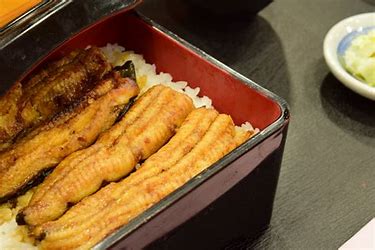
Kanto style involves splitting the eel from the back, also known as a back opening. The meat is skewered and baked as is or steamed before sauce application.
Kansai style involves an open belly, skewering, and baking before adding sauce for a final bake. This style excludes steaming and is also known as ‘ground burning.’
Cooking eel correctly and making the dishes taste delicious is considered a difficult art. A Japanese saying describes eel cooking as 3 years of skewering, 8 years of tearing, and a lifetime of grilling.
The eel or Unagi used
Japanese often serve Unagi Kabayaki over rice. The grilled eel topping itself is the “Unagi no Kabayaki (鰻の蒲焼)“. The dish is titled “unaju” (unagi + jubako) when served in a square lacquerware bowl called a “jubako”. Unaju, on the other hand, is generally higher in grade and more expensive than Unadon. Unaju makes use of more unagi than Unadon.
The Origin of Unajyu Boxes
There are several theories about the origin of the bowls and boxes used for Unajyu. One theory suggests that during the 18th year of the Meiji era (1868-1912), Okubo Imasusuke, a theatre owner who loved eel, insisted on having his eel delivered warm in a bran of rice. This method prevented the dish from cooling during delivery.
Unajyu FAQ
- Why are Square boxes used for unajyu?
-
The box is square in shape so that eels can be beautifully placed in every corner
- What is the difference between (Nami)並, (Jyo) 上, and (Tokujyo) 特上 in Unajyu?
-
The quality of eels is the same and the quantity of eels is different.
Restaurants Serving Unajyu in Hamamatsu
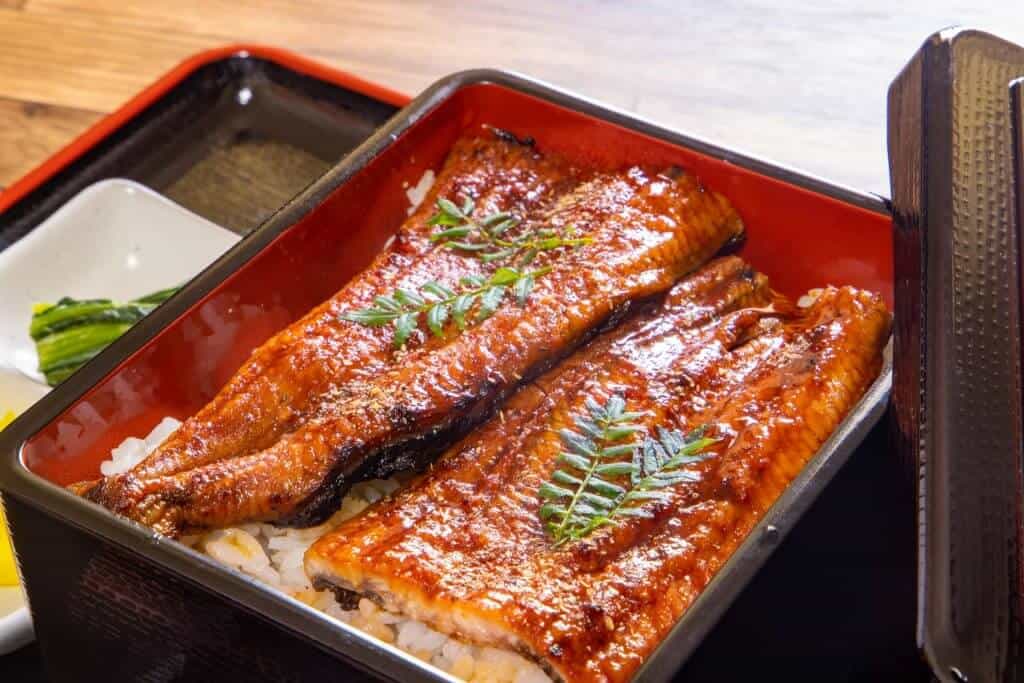
Hamamatsu has lots of recommended Unajyu restaurants.
Eel Dish Atsumi
Eel Dish Atsumi is a restaurant that specializes in using high quality domestic ingredients, including eels from Lake Hamana. Here, you can trust the high standards of food safety with many customers sampling the original taste of eel. They bake Kabayaki Unajyu with a sauce using a secret recipe handed down for more than 100 years. The restaurant’s founding year is 1890. The delicious sauce, is full of aroma and fragrance which you will enjoy from the moment you take the first bite. There is a large menu for you to choose from at this restaurant located within ten minutes walking distance of Hamamatsu Station on the JR Tokaido Line.
Unagi Hikumano
Unagi restaurant Hikumano uses only eels from Lake Hamana in its original dishes. The restaurant specializes in all aspects of eel cuisine using fluffy textures of the body and skin and using salted boiled liver in a wasabi soy sauce in its dish known as Kimosashi. It is an old-fashioned style of an eel speciality restaurant, located just a five-minute walk from Hamamatsu Station. All the eel served here is steamed until soft and fluffy and served with a light sauce if required. The varied menu includes sake and wine selection of local products from Shizuoka Prefecture in addition to the selection of eel dishes available.
Charcoal-grilled Unagi Aoiya
The specialty eel restaurant, formerly known as Charcoal-grilled Unagi Kantaro, sells carefully selected high-quality eels, especially those with a thick volume. They typically roast and serve these eels with wasabi sauce and a little salt. One of the restaurant’s charms is the ability for you to choose the eels you want to eat from the live selection on display. Kabayaki is prepared and then carefully grilled using Bincho charcoal for its smooth texture. This process results in a dish of fluffy, tasty eel with a crunchy, fragrant exterior created by the charcoal. Akitakomachi rice, renowned for its minimal pesticide use, is the carefully selected variety used here.
Kanerin Eel Restaurant
This restaurant is famed for its exquisitely baked eel using Bincho charcoal and the ‘Unaju Special,’ a sauce that has been served across generations of customers. Founded around 70 years ago, it is a restaurant serving a richly flavoured eel that only a long-established restaurant can deliver. Customers can enjoy the atmosphere of a calm environment inside or weather depending on the courtyard surrounded by beautiful scenery.
Shimizu Family
The Shimizu Family Restaurant grills fresh eels caught that morning. Along with the Unajyu, they serve a soup. They receive only the number of eels they plan to serve each day every morning and cook all of them to order on a carefully managed charcoal grill to ensure the correct temperature. Customers can enjoy a taste that has remained unchanged over three generations of this family of chefs in an inviting atmosphere. If you prefer to take your selected food away, they offer eel boxes for this service.

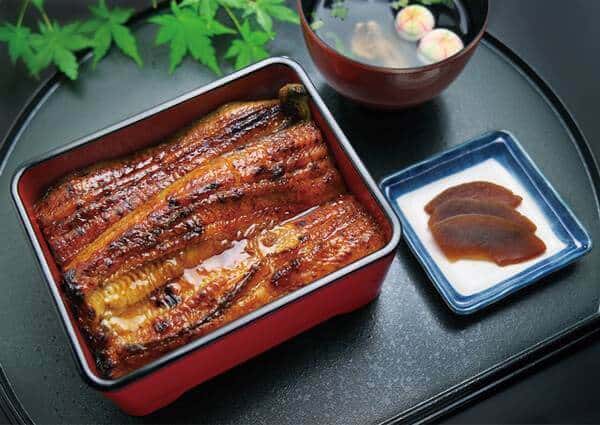
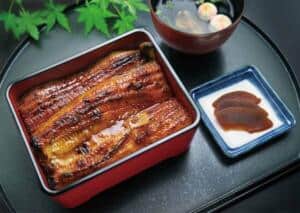
Comments